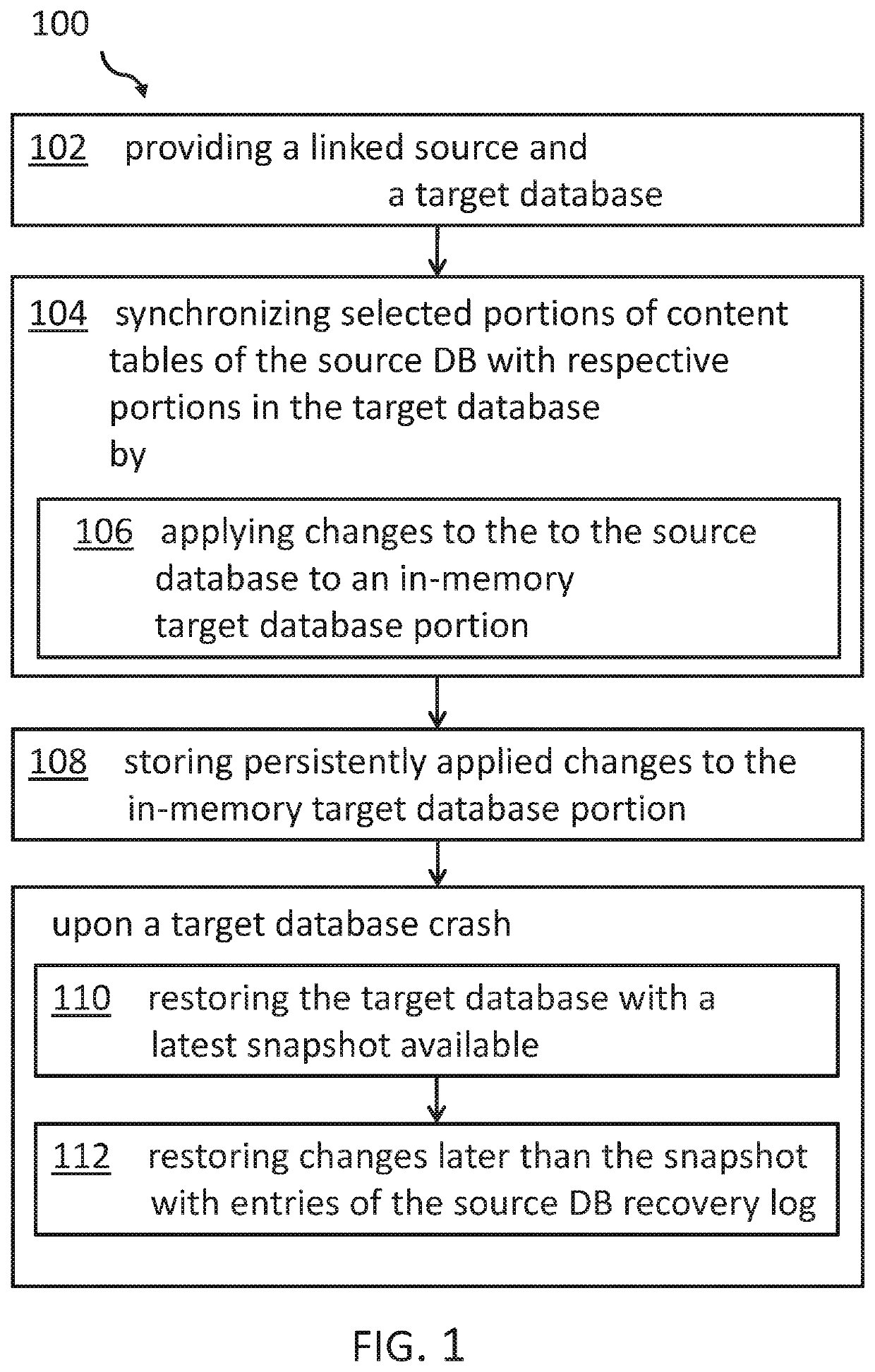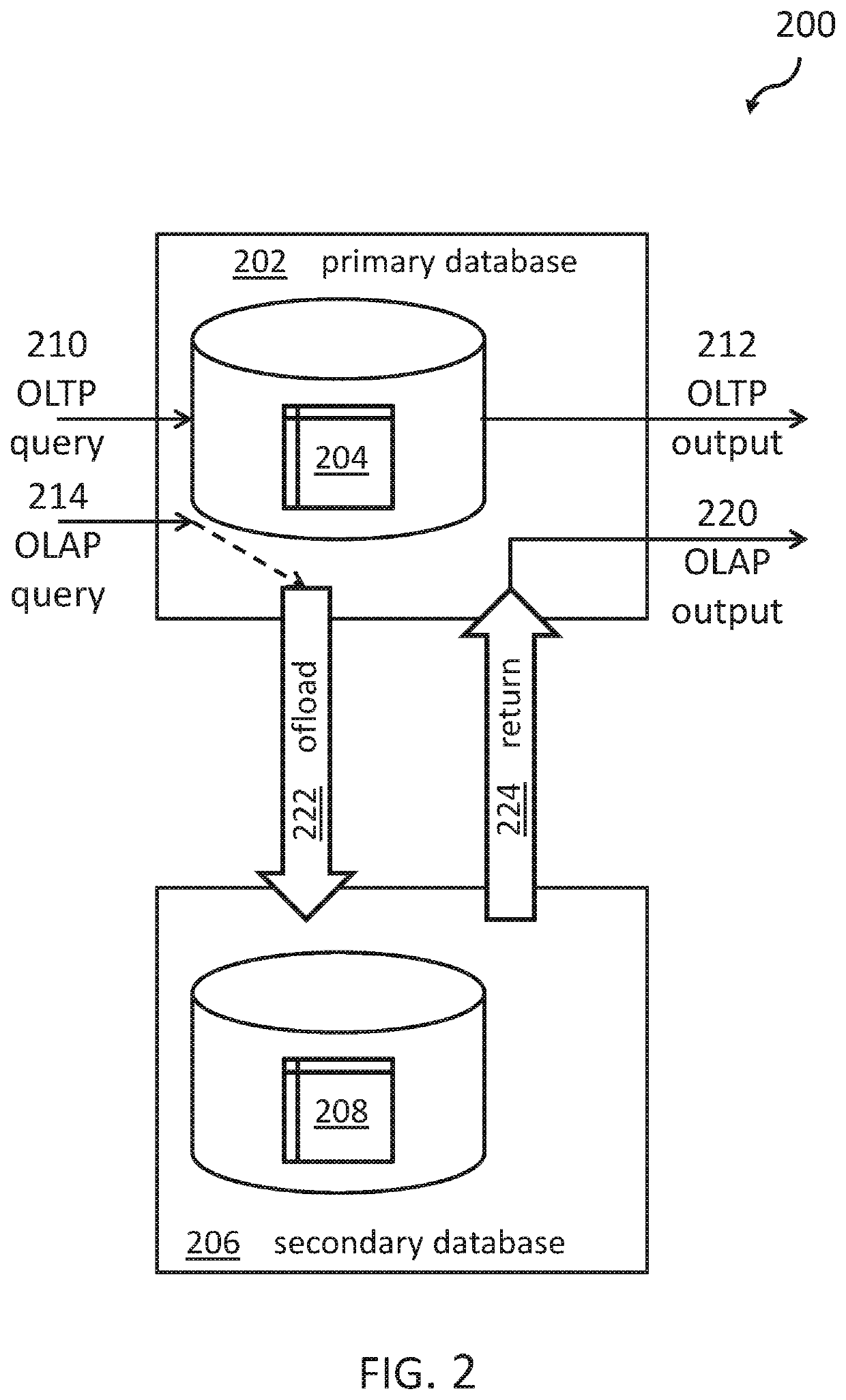Asynchronous persistency of replicated data changes in a database accelerator
a database accelerator and replication technology, applied in the field of database crash recovery, can solve the problems of inability to recover inability to maintain large amounts of data, and inability to meet the requirements of database recovery,
- Summary
- Abstract
- Description
- Claims
- Application Information
AI Technical Summary
Benefits of technology
Problems solved by technology
Method used
Image
Examples
embodiment 200
[0073]FIG. 2 shows a block diagram of an embodiment 200 of linked databases. The primary or source database 202 receives OLTP queries 210 and OLAP queries 214. Those queries that are identified as OLAP queries 214 are transferred or offloaded, 222, to the secondary or target database 206. The source database 202 comprises a plurality of tables 204 and related stored data. The target database 206 also comprises tables which represent at least a subset of the database tables 204 of the source database 202 and at least a subset of the data in the database tables 208.
[0074]After the OLAP operation has been performed by the target database 206, the data are returned, 224, and the OLAP output 220 is returned back to the requesting program or process. OLTP queries 210 are executed directly in the source database 202 and returned as OLTP output 212 to the requesting program or process. Hence, the OLTP or source database 202 may operate at its best performance because it is not slowed down b...
embodiment 300
[0076]FIG. 3 shows a block diagram of an embodiment 300 of how the target database can be synchronized. The source database management system 302 controls the operation of the source database 202 and its related tables 204 (compare FIG. 2). The same applies to the target database management system 308 for the target database 206 and the related tables 208.
[0077]The source database management system 302 also maintains the recovery log file 306 for the source database 202. A log reader or log file reader 314 reading the recovery log file 306 provides these data to the applying unit 316 which applies the changes (i.e., insert, update, delete) performed to the source database also to the target database 206 for the selected tables and the selected set of data. The selected tables and the selected set of data may be a subset of those related tables and data in the source database 202 as defined beforehand. The applying unit 316 can optimize the application of the changes to the target da...
embodiment 500
[0085]FIG. 5 shows a block diagram of an embodiment 500 of the linked database system comprising components for a customer priority optimized recovery strategy. The source DBMS 542 has exemplary a first source database 504 of a first user or tenant (e.g., in a cloud computing environment) and a second source database 506 of a second user or tenant. In additional, separated source database systems for other users or tenants may be available.
[0086]Separate data synchronization subsystems 510, 512 are implemented in the data synchronization system 508 in order to synchronize the source databases 504, 506 with the respective in-memory portions 518, 520 of the in-memory target database 516. The query process 522 receives the database queries for execution in the in-memory portion of target database(s) 516. These queries are typically the OLAP queries which have been offloaded from the source database(s) 504, 506.
[0087]The recovery process or processor 524 of the target DBMS 514 also rece...
PUM
 Login to View More
Login to View More Abstract
Description
Claims
Application Information
 Login to View More
Login to View More - R&D
- Intellectual Property
- Life Sciences
- Materials
- Tech Scout
- Unparalleled Data Quality
- Higher Quality Content
- 60% Fewer Hallucinations
Browse by: Latest US Patents, China's latest patents, Technical Efficacy Thesaurus, Application Domain, Technology Topic, Popular Technical Reports.
© 2025 PatSnap. All rights reserved.Legal|Privacy policy|Modern Slavery Act Transparency Statement|Sitemap|About US| Contact US: help@patsnap.com



